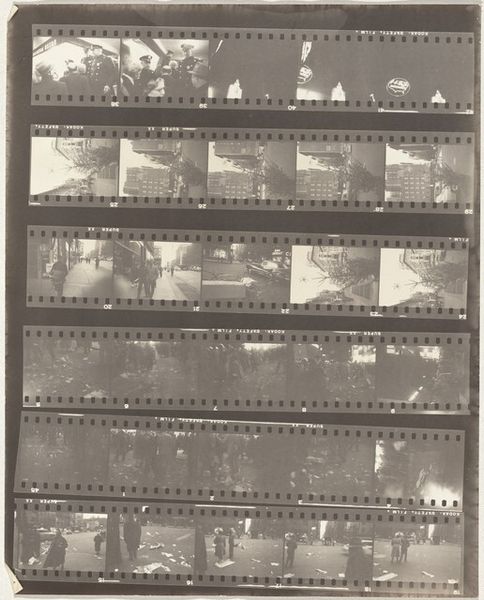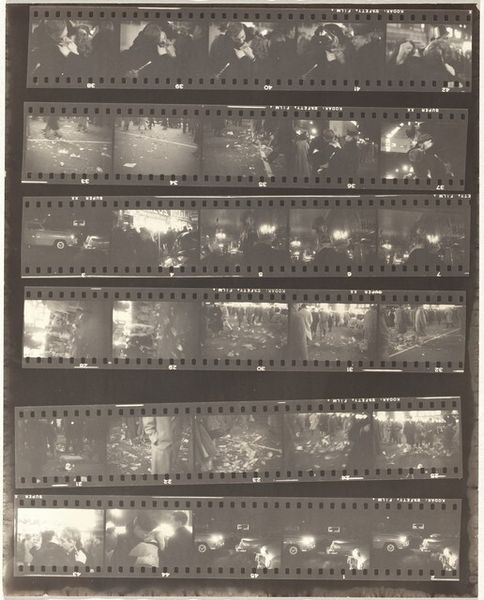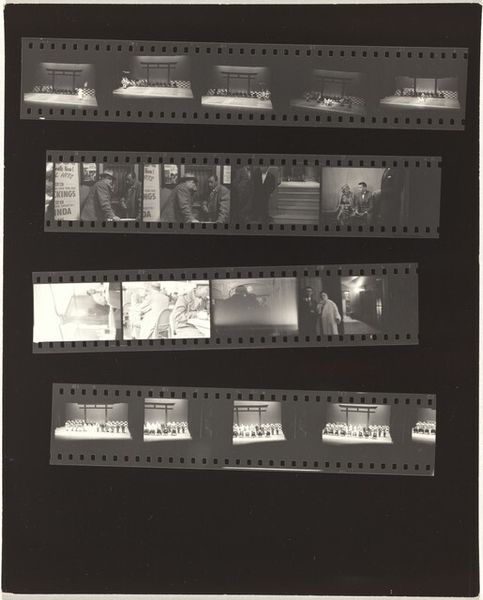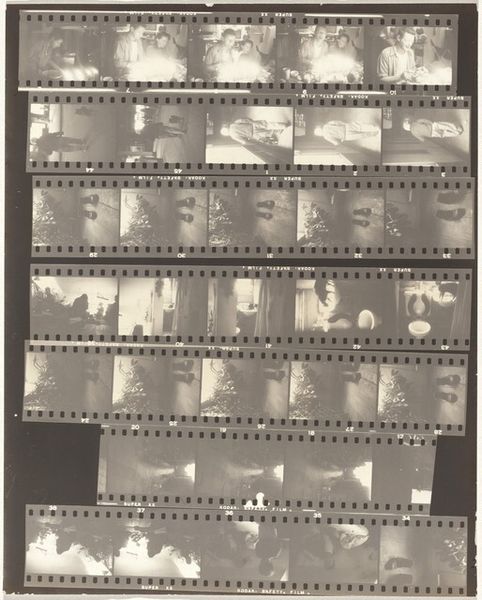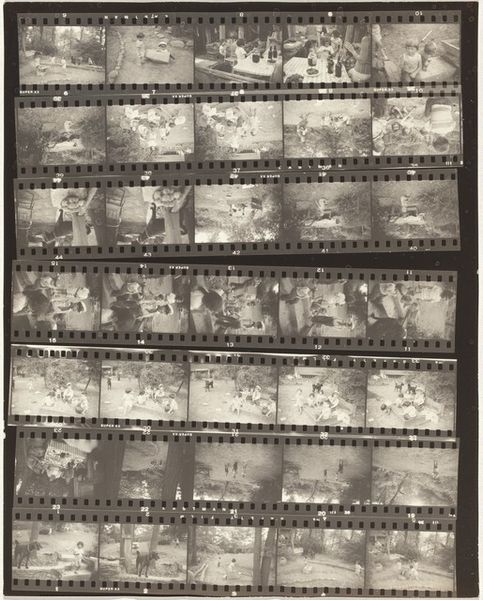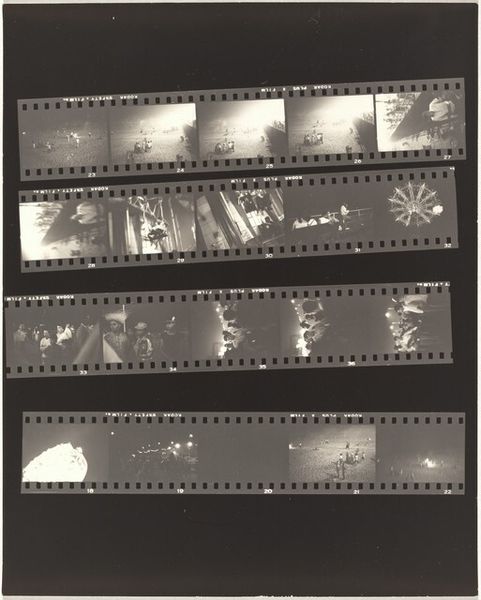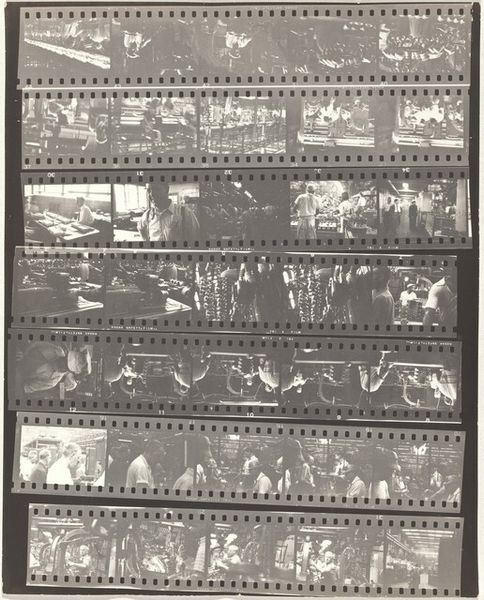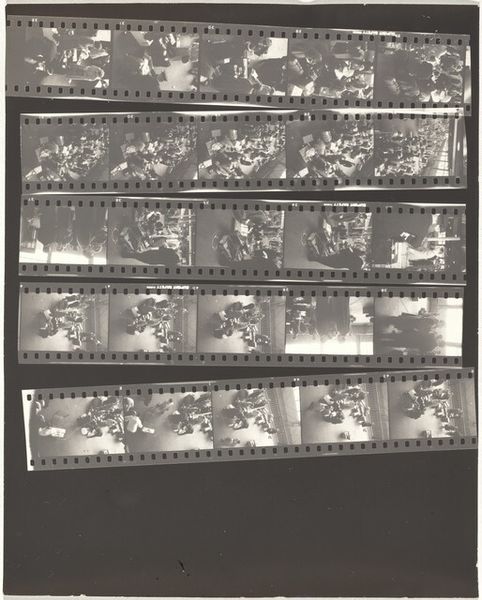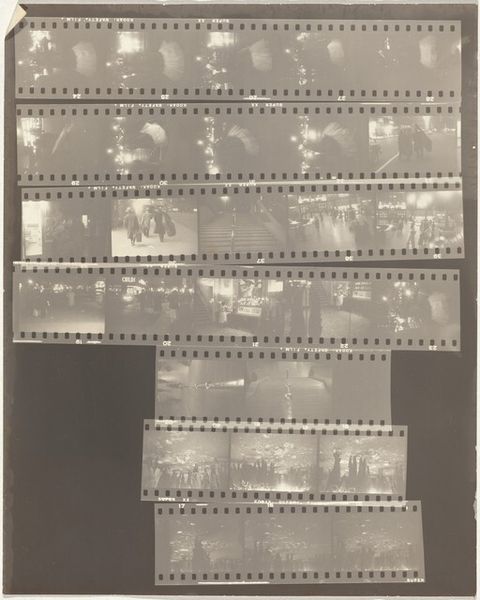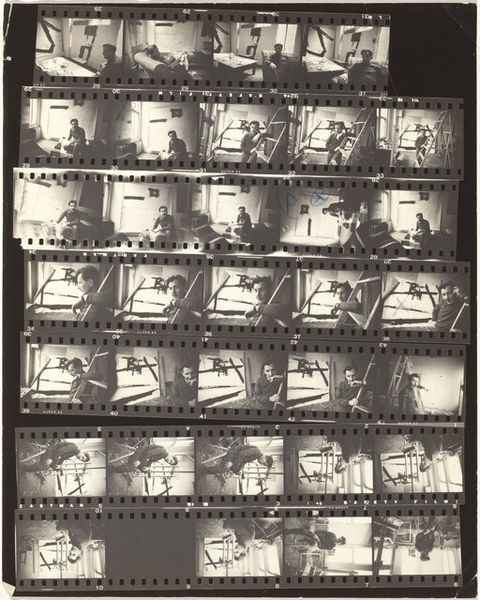
Dimensions: sheet: 25.2 x 20.3 cm (9 15/16 x 8 in.)
Copyright: National Gallery of Art: CC0 1.0
Editor: So, this is Robert Frank’s "Subway - no number" from 1955, a gelatin silver print. What strikes me is how it presents a series of fleeting moments, almost like fragmented memories. What do you make of it? Curator: It is compelling, isn't it? This contact sheet itself functions as a potent symbol, capturing not just individual moments but the very *process* of seeing and selecting. Each frame, a window into a specific encounter, resonates with the weight of lived experience. What emotional currents do you detect flowing through these scenes? Editor: I sense a mix of isolation and intimacy. People are physically close, yet each seems lost in their own thoughts, detached. Is Frank suggesting something about urban life in the 1950s? Curator: Precisely. Consider the subway itself—an archetypal space of transition. Symbolically, it's a modern underworld where identities blur and converge. What stories do these faces tell you about post-war American society? Look closely at their expressions, their gestures… Editor: There's a weariness, maybe even resignation, in some faces. Others seem hopeful, expectant. It’s like a microcosm of society packed into a train car. Curator: Indeed. Frank captures that tension brilliantly. The raw, unfiltered aesthetic – the graininess, the lack of polish – reinforces the authenticity of these fleeting glimpses into ordinary lives. How do you think this rawness impacts our connection with the subjects? Editor: It feels more real, more human. It’s like he's stripping away the façade to reveal something deeper. I see how he connects this string of instants to the culture from that time and it tells us something timeless about being human. Thanks for this explanation. Curator: My pleasure. It's in these layered readings of visual language that we unearth history's echoes and intimations of shared futures.
Comments
No comments
Be the first to comment and join the conversation on the ultimate creative platform.
